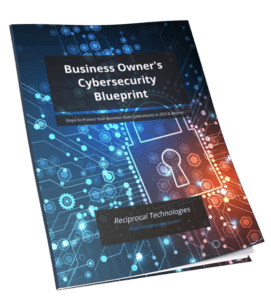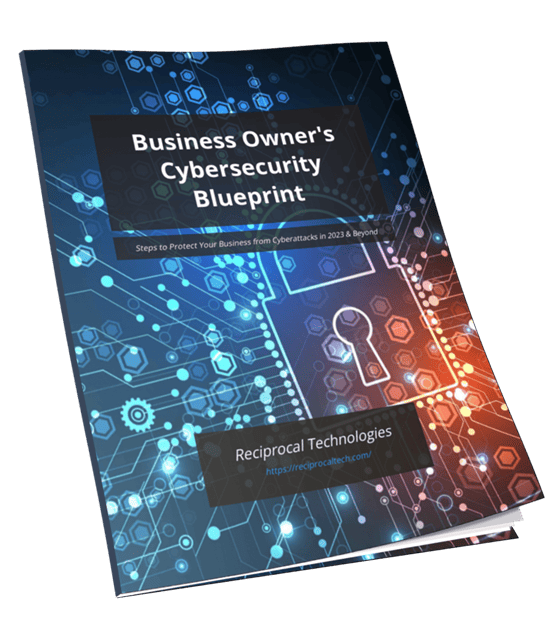Don’t Look Now: More Cybercrime

Technology unlocks incredible potential, but is also constantly stalked by an increasingly sophisticated adversary: cybercrime. For businesses of all sizes, threats are changing faster than ever, driven by new technologies and a highly organized criminal industry.
To protect your profits, reputation, and continuity, your business can no longer rely on yesterday’s defenses. You need to understand the evolution of the threat and implement a proactive, multi-layered strategy.
The Evolution of Cybercrime: Smarter, Faster, More Targeted
Cybercrime is no longer the domain of isolated hackers; it has industrialized. The threats are more lucrative, easier to execute, and leveraging cutting-edge technology. Let’s take a look at some of the attacks looking to cause chaos and steal your money and data:
- AI-powered attacks – Cybercriminals are now weaponizing Artificial Intelligence (AI) to scale their operations.
- Hyper-realistic phishing – AI can generate highly convincing, personalized phishing emails at scale, making it nearly impossible for employees to spot a fake.
- Accelerated attack research – AI tools help bad actors quickly identify and exploit vulnerabilities in a company’s systems.
- Ransomware-as-a-Service – Ransomware is soaring, and RaaS models have lowered the proverbial barrier to entry. Attack groups now sell their malicious software and infrastructure to less-skilled criminals, turning what was once a complex operation into a simple, high-profit transaction. Unfortunately, the goal isn’t always just locking your files; it’s total leverage. Double extortion, where criminals first steal your data and then threaten to publish it if the ransom isn’t paid, is commonplace.
- The supply chain weaknesses – Attackers are increasingly targeting third-party vendors, suppliers, and partners to gain access to their main target (you). If one of your small, less-secure vendors is compromised, it can create a direct pathway into your network.
- Cloud and remote work vulnerabilities – Anything that happens quickly will have some vulnerabilities. The rapid shift to cloud services and distributed workforces has expanded a business’ attack surface. Misconfigurations in cloud environments, unsecured home networks, and the use of personal devices have all provided new, lucrative entry points for criminals.
How to Keep Your Defenses Up: A Proactive Business Strategy
Combating this evolving threat requires a mindset shift from simply being reactive (patching vulnerabilities after they’re found) to being cyber-resilient and proactive.
Fortify Your Human Firewall with Training
The easiest way into any system is often a person. Your employees are your first, and most critical, line of defense.
Mandatory, Ongoing Training
Conduct regular security awareness training. This shouldn’t be a one-time annual event but an ongoing program with up-to-date examples of phishing, social engineering, and vishing (voice phishing) attempts.
Phishing Simulations
Run controlled, internal phishing tests to identify and re-train vulnerable employees.
Establish a No-Blame Culture
Encourage employees to report suspicious activity immediately without fear of penalty.
Implement the Zero Trust Model
The old trust, but verify network approach is going the way of the dinosaur. The new standard is Zero Trust: never trust, always verify.
Strict Access Control
Grant employees and systems only the minimum access they need to perform their jobs.
Multi-Factor Authentication (MFA)
Make MFA mandatory for all accounts, especially for remote access, email, and privileged systems. This one step can stop the vast majority of credential-based attacks.
Perfect Your Data Backup and Recovery Plan
In the face of a successful ransomware attack, your ability to recover quickly is your ultimate defense.
Follow the 3-2-1 Rule
Keep 3 copies of your data, on at least 2 different media types, with 1 copy stored securely off-site or in an air-gapped environment.
Test Recovery Regularly
Don’t just back up; regularly test your ability to restore critical systems and data to ensure you can get back to business quickly if disaster strikes.
Shore Up Technical Defenses
The basics are still critical and must be rigorously maintained:
Patch Management
Implement an aggressive schedule for installing all software updates and security patches as soon as they are released. Unpatched systems are a criminal’s favorite target.
Endpoint Detection and Response (EDR)
Go beyond basic antivirus. EDR tools actively monitor end-user devices (laptops, desktops) for suspicious behavior and can isolate threats before they spread.
Vet Your Third-Party Risk
Your vendors are an extension of your security perimeter.
Vendor Risk Assessment
Implement a formal process to assess the security practices of all third-party vendors and partners who handle your data or have access to your network.
Secure Contracts
Ensure your contracts include strict security and data protection requirements.
The cost of a security breach can be catastrophic. You can risk your relationships and it can financially and legally bury your business. Unfortunately, cybercrime is not slowing down. By understanding its evolution and committing to these proactive defenses, your business can significantly reduce its risk and focus on what it does best. The time to build your resilience is now.
If you would like to talk to one of our knowledgeable security experts about getting your business more prepared for an attack on your network, give us a call today at 317-759-3972.
About the Author
Author’s recent posts
Download the
Business Owner’s Cybersecurity Blueprint


